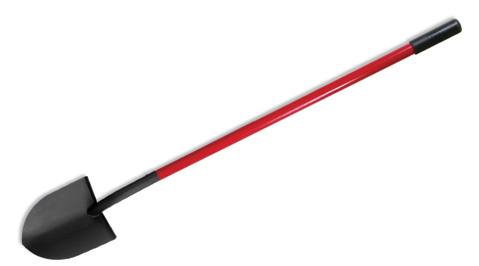Digging a Hole
Tips for Successful Plantings

There are many factors that go into the success of any gardening project. One of the most important, and frankly the easiest once the basics have been mastered, is just what kind of hole to dig. Here are a few simple rules to follow for planting everything from seedlings to boxed specimens.
The first thing to remember about any plant is that the roots that carry the majority of the water and nutrients into the stem are the very fine feeder roots. Feeder roots are typically found in the top one to two feet of soil, even for large trees. Although the deepest roots of both fruit and most ornamental trees are burrowing from six to eight or more feet down, and woody shrubs even less (one and a half to five feet), these roots are functioning mostly as anchorage for the plant above ground. Amazingly, annuals like vegetables can have root systems just as deep as some of their perennial cousins: Tomato roots can reach deeper than 10 feet under ideal conditions. Luckily though, most plants can make do with much shallower soils and in the garden may reach only two-thirds to three-quarters their potential root depths.
A six-foot-deep hole is not required when planting a new tree, however. One of the great feats of plant roots is that they can incrementally advance through the densest soil and accomplish such feats as splitting large boulders by prying open the tiniest of cracks. Give them the best start possible, and then stand back and watch them thrive.
Knowing that the finest roots are the ones contributing the most to a plant’s growth, it only makes sense that the planting zone that requires the most attention at planting time is the top layer of soil. If the top one to two feet of soil is well-prepared, the plant can then grow out as far as its genetics allow. Dig the hole at least twice as wide as, and a third or so deeper than, the height of the current root ball. Most soil experts now agree that the best way to grow plants is in the native soil. Amend the soil with organic material that will contribute to the soil nutrient level and permeability to water and oxygen. If the soil is particularly dense, composed mostly of clay, and the plants of choice require good drainage, be sure to incorporate some inorganic materials like sand and fine gravel to increase the movement of water down through the root zone. The purpose behind incorporating amendments when planting is to give the first roots a running start so they can support the growth of the plant. If all is well, they will soon grow out beyond the planting hole and adapt well to the site. To sum up: Dig the hole wider than the original root ball, whether bare root or container grown — from cell pack two-inch starts to 24-inch boxed trees.
The roots of young plants will need to be watered consistently until they move out into the newly prepared soil. Building a small berm around the just-planted specimen to hold and direct water down into the “old” root zone is essential. Water cannot travel on its own between the two soil types of the potting medium and planting bed. It is not until the new roots penetrate the prepared soil that the plant will begin to benefit.



